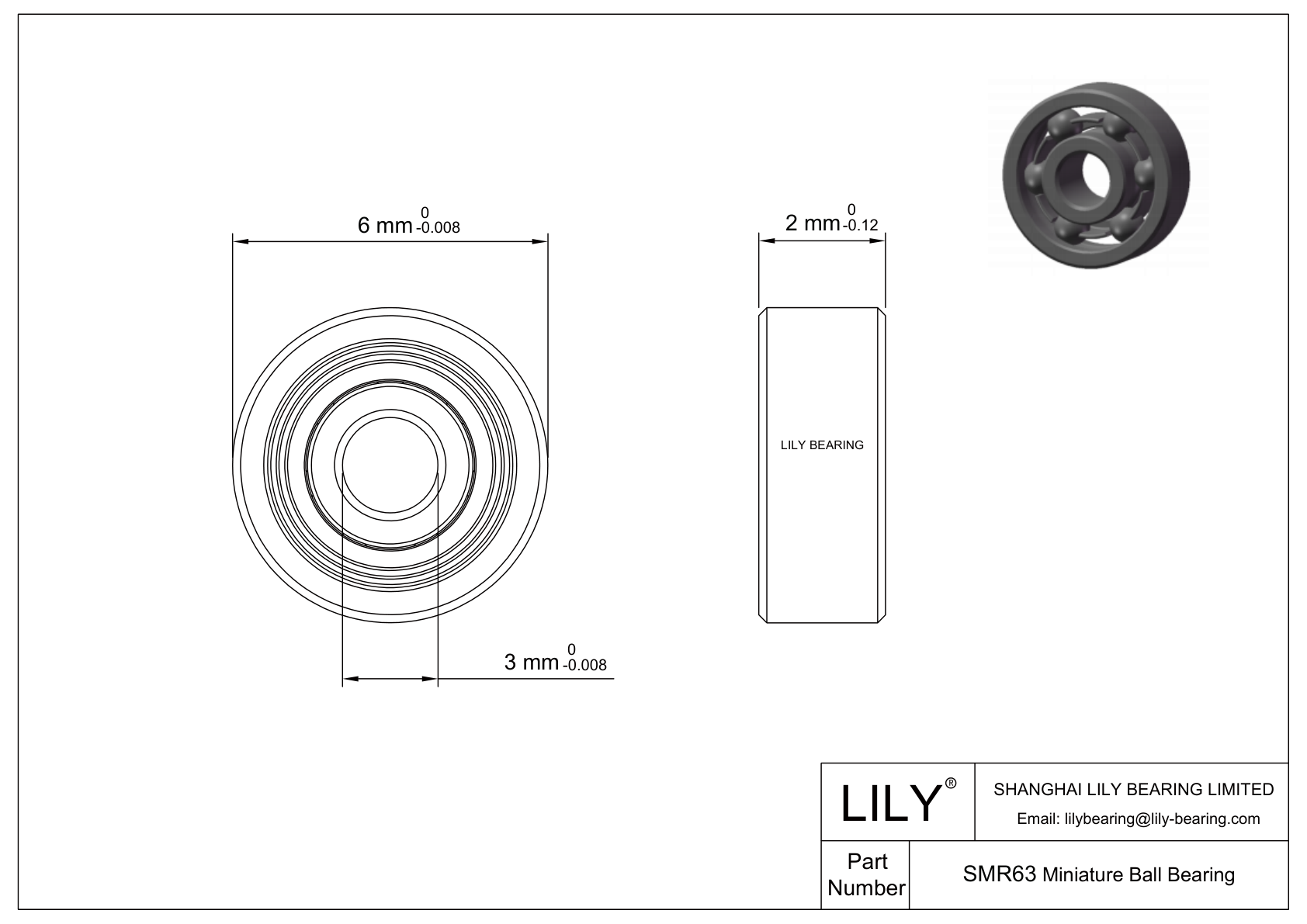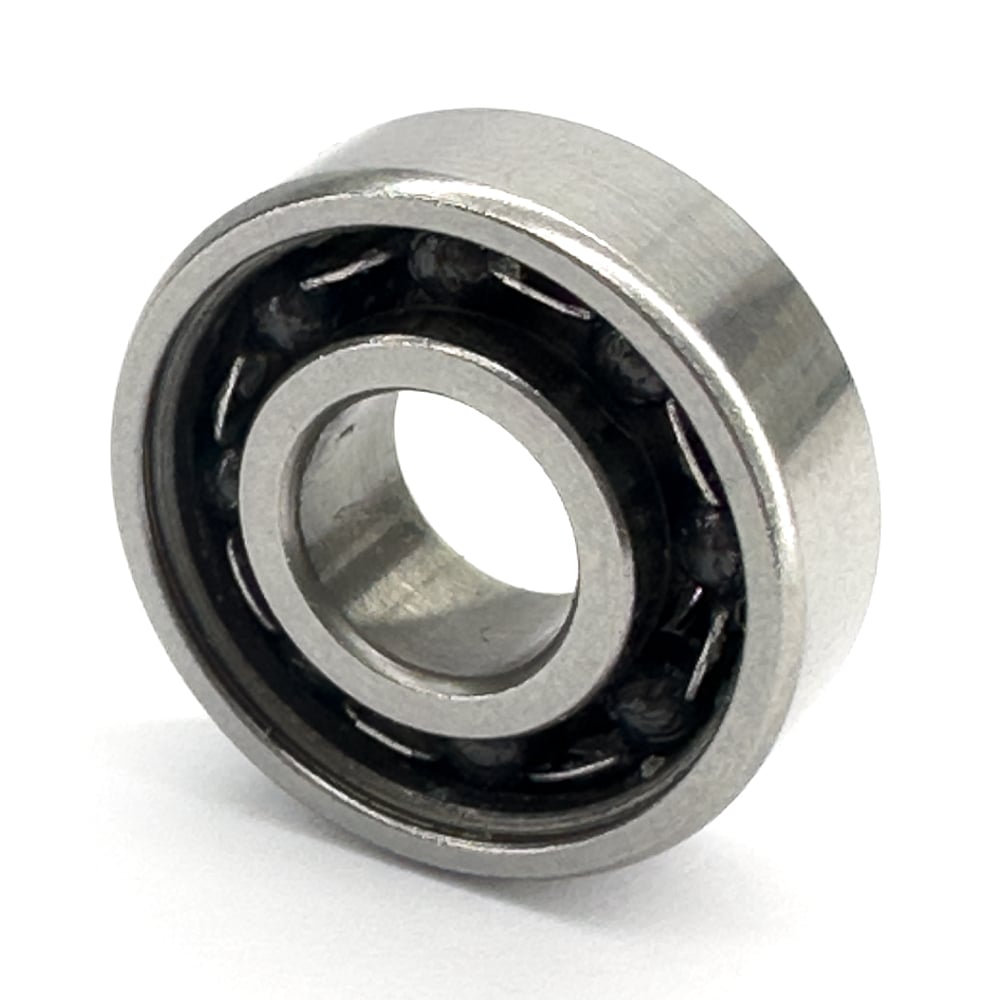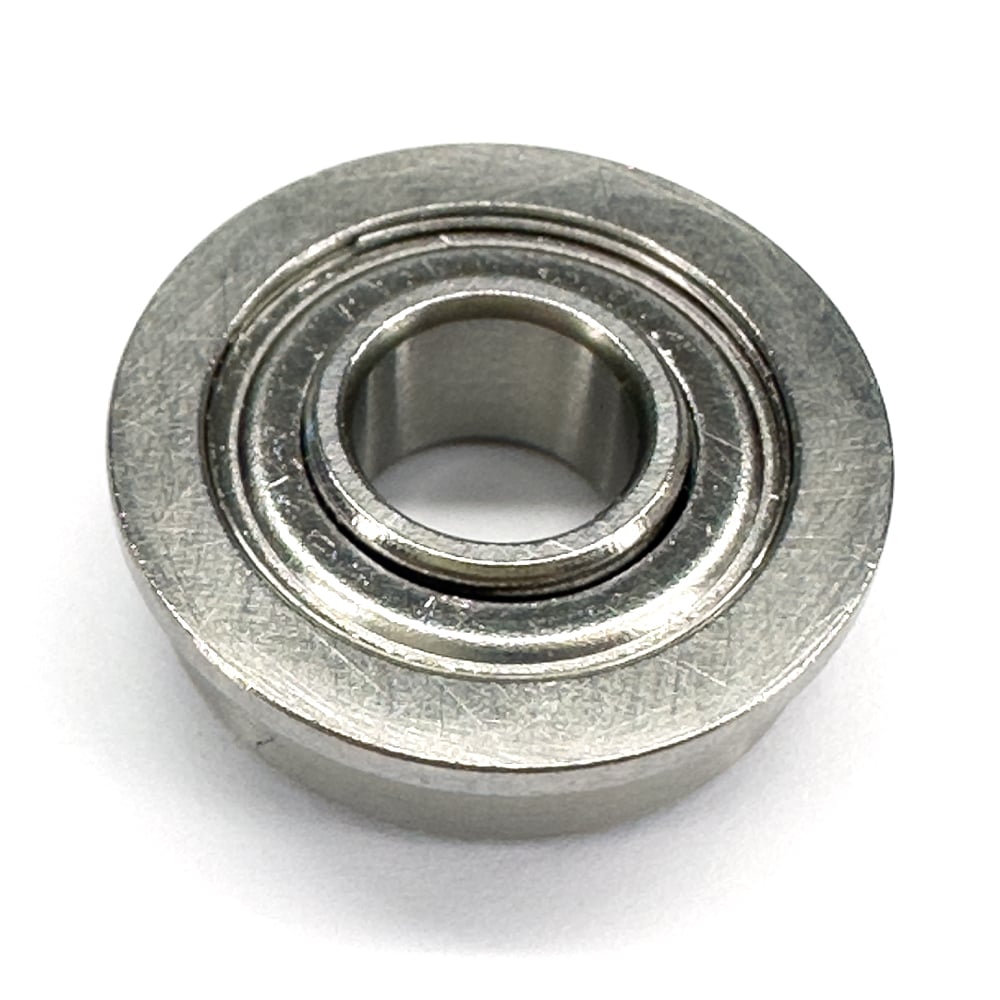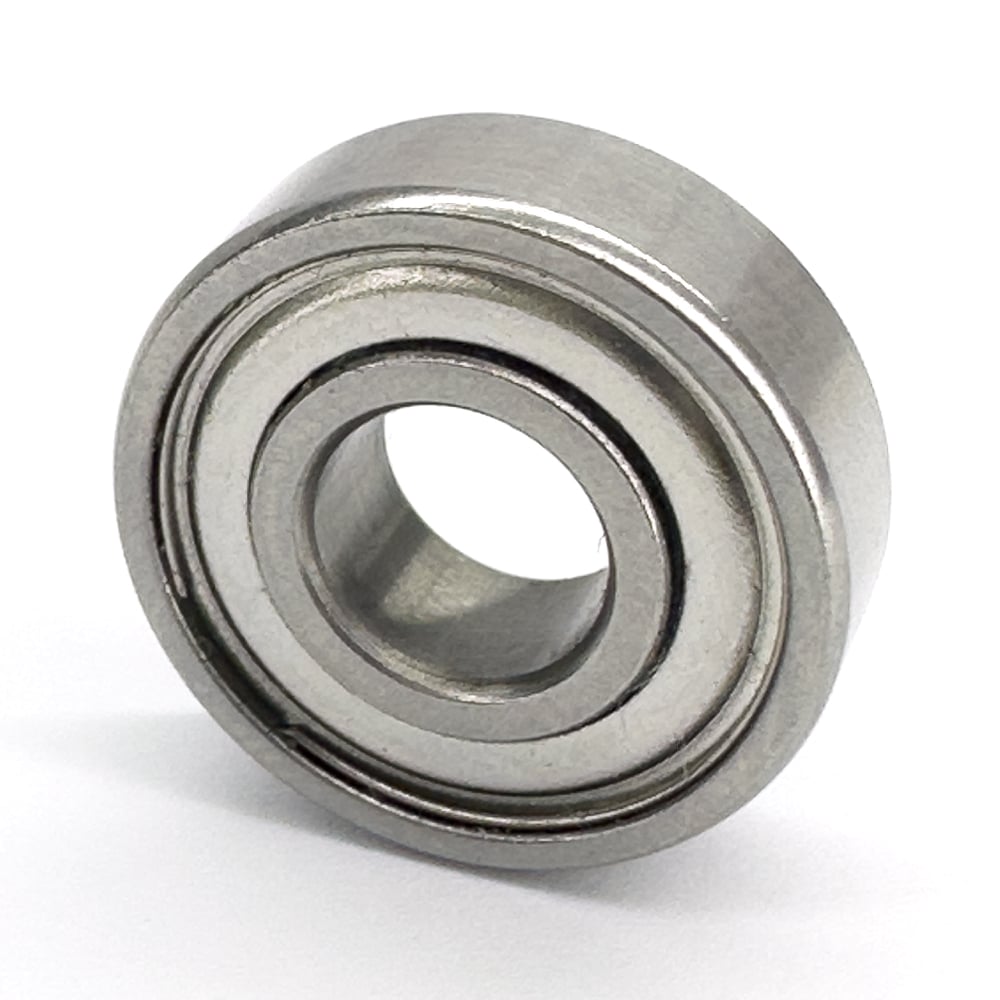Cancel
SMR63C-Y #5 AF2

Price $ 3.95
Number
| Part Number | SMR63C-Y #5 AF2 |
| System of Measurement | Metric |
| Bearing Type | Ball |
| For Load Direction | Radial |
| Construction | Single Row |
| Inner Ring Type | Standard |
| Seal Type | Open |
| Bore Dia | 3 mm |
| Outer Dia | 6 mm |
| Width | 2 mm |
| Ring Material | 440C Stainless Steel |
| Balls Material | Si3n4 |
| Cage Material | Stainless Steel |
| Lubrication | Shell Af2 Oil |
| Shaft Mount Type | Press Fit |
| Temperature Range | -86 to 230 °F |
| ABEC Rating | Abec#5/isop5 |
| Radial Clearance Trade No | MC3 |
| Ball Grade | 10 |
| RoHS | Compliant |
| REACH | Compliant |

Design Features of SMR63C-Y #5 AF2 Bearing
SMR63C-Y #5 AF2 Bearing utilizes ceramic balls, typically made of silicon nitride (Si3N4), combined with steel inner and outer races. SMR63C-Y #5 AF2 bore dia is 3 mm. Its out dia is 6 mm. SMR63C-Y #5 AF2 width is 2 mm. This Bearing provides a sophisticated, high-performance solution that caters to the unique challenges presented by modern industrial and technological applications.
What Benefits Can SMR63C-Y #5 AF2 Bearing Provide?
- Reduced Friction: Ceramic's low frictional properties ensure smoother operation and decreased heat generation.
- Enhanced Durability: The wear-resistant nature of ceramic extends the bearing's lifespan, particularly in demanding conditions.
- Corrosion Resistance: Ceramic balls resist moisture and chemicals, safeguarding the bearing from corrosive environments.
- Electrical Insulation: Its non-conductive composition prevents electrical arcing, essential in electrically active setups.
- High-Speed Operation: Its attributes permit this bearing to operate efficiently at elevated rotational speeds.
What Can SMR63C-Y #5 AF2 Bearing Be Used for?
SMR63C-Y #5 AF2 Bearing is employed in various applications due to its unique characteristics. It can be used for:
- Electric Motors: Ideal for preventing electrical arcing, especially in electric vehicles.
- Precision Machinery: Suited for high rotational accuracy needs.
- Aerospace: Meeting the demands of wear resistance and thermal stability.
- High-Frequency Machining: Beneficial for high-speed spindles and machining centers.
- Harsh Environments: Resisting corrosion and withstanding extreme temperatures.
Recommended Products






